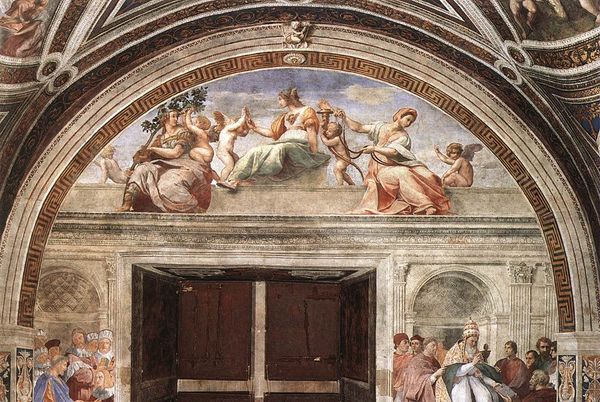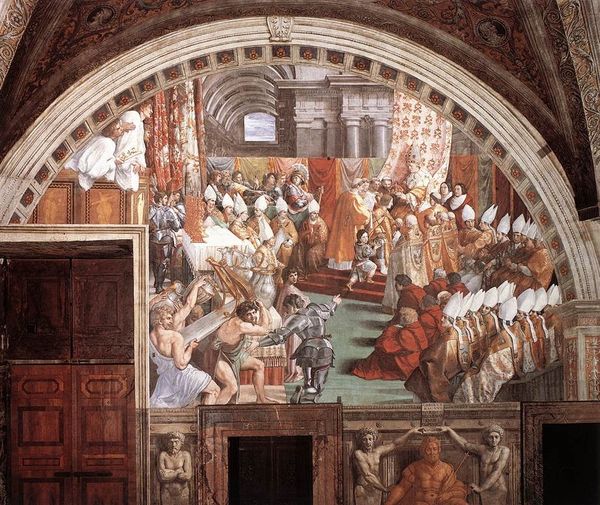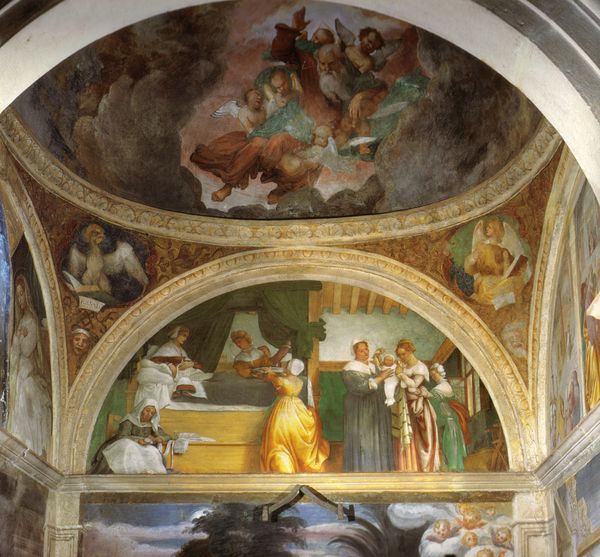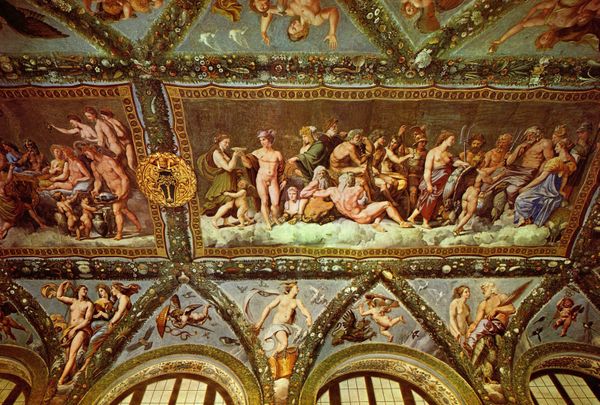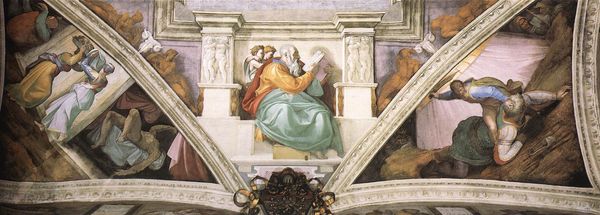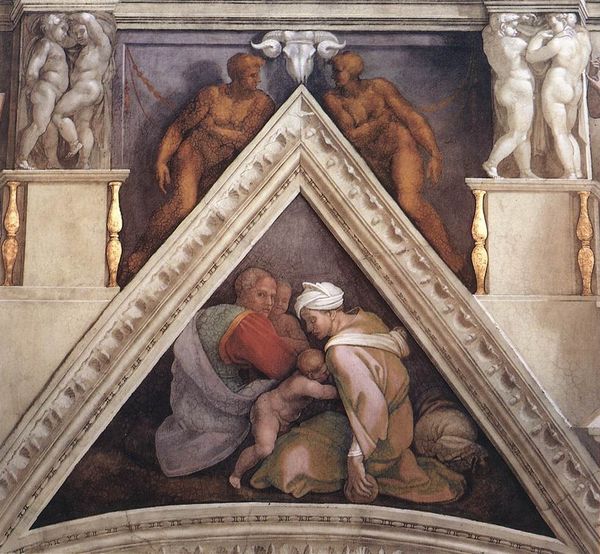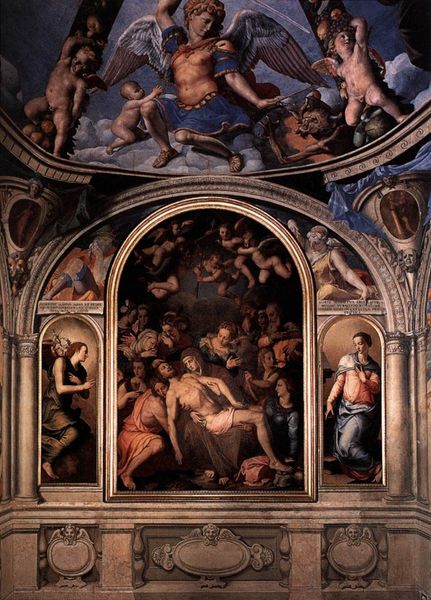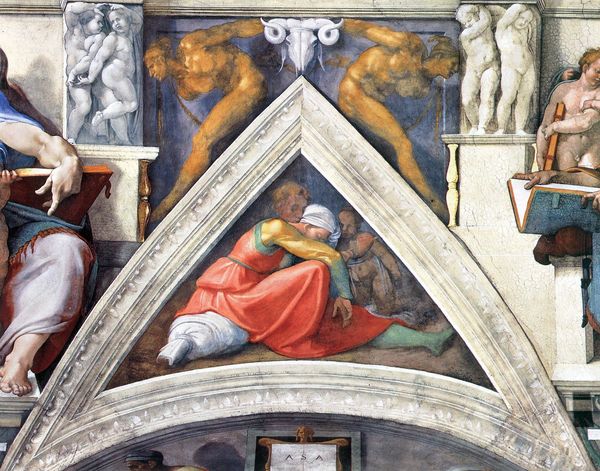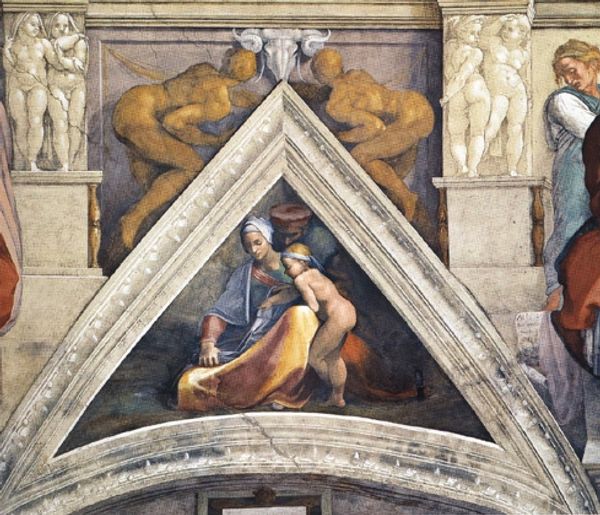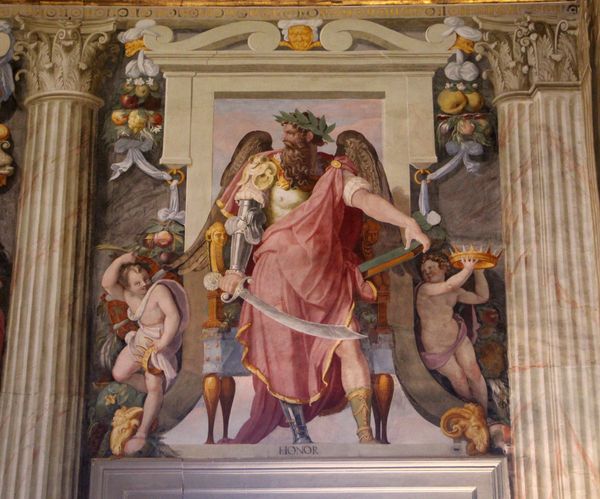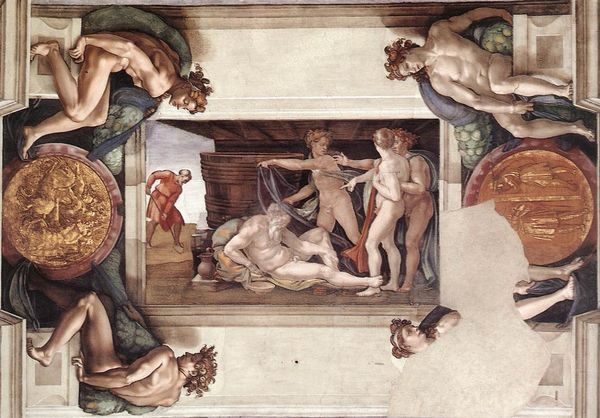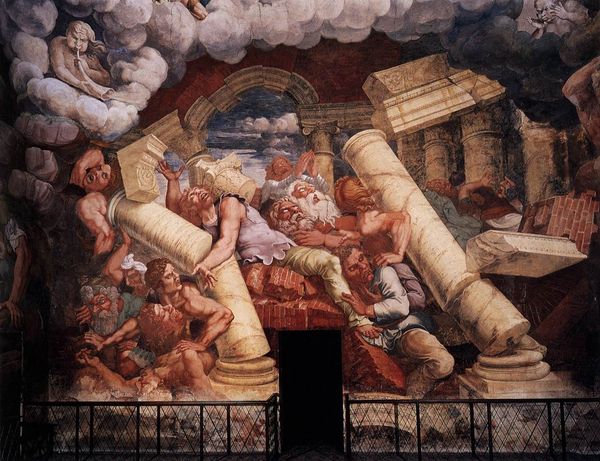
painting, fresco, mural
#
high-renaissance
#
allegory
#
painting
#
sculpture
#
holy-places
#
sculptural image
#
figuration
#
fresco
#
mythology
#
history-painting
#
academic-art
#
italian-renaissance
#
mural
Copyright: Public domain
Editor: Here we have Raphael's fresco, "The Sibyls," from 1514, adorning a wall in the Basilica of Sant'Agostino in Rome. The figures seem so dynamic, full of movement... it almost feels sculptural. What catches your eye most about this piece? Curator: Considering its creation in situ, I’m immediately drawn to the labor involved. Fresco is a demanding medium. We're not just seeing a painting; we're seeing evidence of a sustained physical engagement, the artist meticulously layering pigment onto wet plaster, day after day. Imagine the scaffolding, the mixing of materials, the entire process of its making... Editor: That's fascinating; I hadn’t considered the physical demands. How did that influence the final piece, do you think? Curator: Absolutely! The limitations and the opportunities inherent in fresco technique directly affected the work's scale, its colour palette and level of detail, encouraging Raphael towards grand forms, emphasizing gesture over minute detail to create lasting visual effect within the architecture. Moreover, where did Raphael source his materials from? Who mixed the pigments? The answers illuminate a network of labor, materials, and social connections central to this fresco. Editor: So, it's not just about the artistry, but also about understanding the context of its production? Curator: Precisely. We have to consider who had access to these resources during the early 16th century, as well as how materials from a wider society may have been consumed in its creation, thereby enhancing our insight into the era in which Raphael lived. Editor: I've always been so focused on the art-historical context, but focusing on the labor really opens up a new way of understanding the painting. Curator: Indeed, this exploration reveals much more about the society that birthed it.
Comments
No comments
Be the first to comment and join the conversation on the ultimate creative platform.
